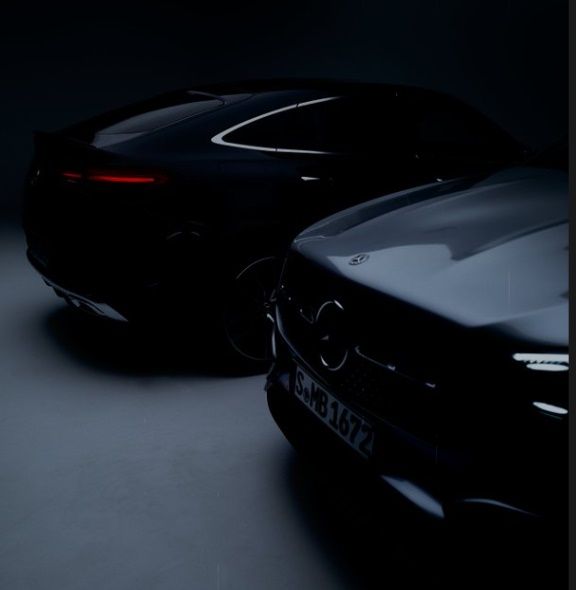Sapphire’s Pulse line of cards are popular because they are typically among the cheapest on the market, but offer solid performance comparable to mid-range competitive cards. And this also applies to the Pulse AMD Radeon RX 7900 XTX.
We already looked at the reference Radeon RX 7900 XT a few weeks ago. Today we have the first test of one of the non-reference models. At the outset, I’ll just remind you that AMD introduced the new RDNA3 architecture last November.
The first models of the new generation are Radeon RX 7900 XTX and RX 7900 XT. Both are equipped with the largest graphics chip with the RDNA3 architecture, codenamed Navi31. It is the first graphics chip divided into a large computing core (GCD) and smaller chiplets (MCD), into which the infinity cache and memory controllers have been moved.
The more powerful RX 7900 XTX is equipped with a chip with a fully active core, 24 GB of GDDR6 memory with a speed of 20 Gb/s connected via a 384b bus. The recommended price from AMD is $999, which translates to roughly 27,400 crowns including tax.
In the RX 7900 XT, the chip has slightly worse parameters, it has only five functional MCD chiplets forming 80 MB of infinity cache and a 320b bus, on which 20 GB of GDDR6 memory with a speed of 20 Gb/s is connected. The recommended price is 24,600 crowns with VAT at the current exchange rate.
With both new models, AMD is currently targeting the competitive 16GB GeForce RTX 4080. It has a suggested retail price starting at $1,200, which is 33,500 crowns including VAT at the current exchange rate. From below, the weaker RX 7900 XT is pushed by the usually cheaper GeForce GTX 4070 Ti. It has a noticeably lower price, but also generally lower performance and worse equipment. Especially in terms of memory, with 12 GB GDDR6X, it is worse than the RX 7900 XT, but to some extent it compensates, in addition to the lower price, with lower consumption, better operational characteristics, wider support for DLSS 2.x titles compared to the competing FSR 2.x and the new DLSS 3.
A more detailed comparison of the parameters of both new models and top Radeons from the previous generation is in the following table:
| AMD Radeon RX 7900 XTX | AMD Radeon RX 7900 XT | AMD Radeon RX 6950 XT | AMD Radeon RX 6900 XT | |
| GPU | Navi 31 | Navi 31 | Navi 21 | Navi 21 |
| Architecture | RDNA 3 | RDNA 3 | RDNA 2 | RDNA 2 |
| Manufacturing process | GCD 5nm TSMC; MCD 6nm | GCD 5nm TSMC; MCD 6nm | 7nm TSMC | 7nm TSMC |
| chip area | 533 mm² (GCD 306 mm² + 6× MCD) |
495 mm² (GCD 306 mm² + 5× MCD) |
520 mm² | 520 mm² |
| Number of transistors | 58 mld. | 58 mld. | 26,8 mld. | 26,8 mld. |
| Compute Units (CU) | 96 | 84 | 80 | 80 |
| Rasterization units (ROPs) | 192 | 192 | 128 | 128 |
| Stream processors | 6144 (12288) | 5376 (10752) | 5120 | 5120 |
| Texture units | 384 | 384 | 320 | 320 |
| Ray tracing accelerators | 96 | 84 | 80 | 80 |
| Infinity cache | 96 | 80 | 128 | 128 |
| Basic beat | 1900 MHz | 1500 MHz | 1890 MHz | 1825 MHz |
| Game tempo | 2300 MHz | 2000 MHz | 2100 MHz | 2015 MHz |
| Tact s boost | up to 2500 MHz | up to 2400 MHz | up to 2310 MHz | up to 2250 MHz |
| Memory bus width | 384 b | 320 b | 256 b | 256 b |
| Memory capacity | 24 GB | 20 GB | 16 GB | 16 GB |
| Memory type | GDDR6 | GDDR6 | GDDR6 | GDDR6 |
| Memory speed | 20 Gb/s | 20 Gb/s | 18 Gb/s | 16 Gb/s |
| Memory throughput | up to 960 GB/s | up to 800 GB/s | up to 576 GB/s | up to 512 GB/s |
| Effective throughput (with infinity cache) | up to 3500 GB/s | up to 2900 GB/s | up to 1793.5 GB/s | |
| Pixel fill-rate | up to 480 GP/s | up to 460 GP/s | up to 295.7 GP/s | up to 288 GP/s |
| Texture fill-rate | up to 960 GT/s | up to 810 GT/s | up to 739.2 GT/s | up to 720 GT/s |
| Half precision | 123 TFLOPs | 103 TFLOPs | 47 TFLOPs | 46,08 TFLOPs |
| Single precision | 61 TFLOPs | 52 TFLOPs | 24 TFLOPs | 23,04 TFLOPs |
| Total power input (TBP) | 355 W | 315 W | 335 W | 300 W |
| Outputs | DP 2.1, HDMI 2.1, USB Type-C | DP 2.1, HDMI 2.1, USB Type-C | DP 1.4a, HDMI 2.1 VRR a FRL, USB Type-C | DP 1.4a, HDMI 2.1 VRR a FRL, USB Type-C |
| interface | PCIe 4.0 x16 | PCIe 4.0 x16 | PCIe 4.0 x16 | PCIe 4.0 x16 |
| length | 287 mm | 276 mm | – | 267 mm |
| height | 2.5 slots | 2.5 slots | 2.5 slots | 2.5 slots |
| power supply | 2× 8pin | 2× 8pin | 2× 8pin | 2× 8pin |
AMD considers the small dimensions of the reference cards compared to the GeForce RTX 4080 Founders Edition, the support of the new DisplayPort 2.1 standard between the outputs to be key competitive advantages. Thanks to this, you will also be able to connect monitors with high resolutions and higher refresh rates than HDMI 2.1 allows, which will come to the market next year. It also boasts an additional power supply using classic eight-pins. And the benefit is an even higher memory capacity. Currently, 20 or 24 GB won’t be much valid for you in games, but if you don’t change the card that often again, the situation may be different in four years. I won’t scare you by saying that 16 GB of memory on the RTX 4080 will not be enough, but it is possible that there will be a few games that can use more than the 16 GB of memory.
Sapphire Pulse AMD Radeon RX 7900 XTX
Pulse is the basic model series from AMD Sapphire’s backyard manufacturer. Compared to most non-reference models, it is Pulse RX 7900 XTX more compact, in the image below you have a comparison with the less powerful model TUF Radeon RX 7900 XT.
But I was surprised by the power supply. The Pulse is usually the cheapest of the cheapest cards in the basic design, but even in this design it has exactly three octaves. It’s odd considering how much emphasis AMD put on powering with two eight-pins. Not against it, when it comes to a powerful card, three eighths is always better than two, but it makes you think that it’s one thing marketing to present a “cost-effective and efficient solution” and quite another reality. You can find three octaves on most non-reference models.
As usual for cards from the Pulse series, the packaging is tuned to shades of red on a white background, the motifs are simple, it doesn’t play on anything like the card itself.
Inside, in addition to the necessary leaflets, you will also find a strut made of strong aluminum or duralumin and longer screws for fastening to the blinds.
There is no dual BIOS this time, it is just as good on most cards, but just in case something goes wrong during flashing. The card has slightly higher clocks compared to the reference values. In the specifications, Sapphire mentions game clocks increased from the reference 2300 to 2330 MHz and the clock with a boost from “up to 2500” to 2525 MHz, GPU-Z even shows 2370 MHz.
This time, however, it cannot be said that the working cycles are higher in practice, on the contrary, they go lower during intense workloads. The power limit is apparently slightly increased from the reference 355 to some 363 W.
Not many sensors can be read in GPU-Z, but in HWinfo you can find out so much information from the monitoring that it will make your head spin.


